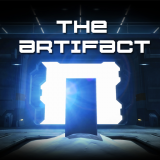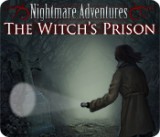Review for Leprechaun Shadow

One thing that can be said about Stand Off Software’s point-and-click fantasy series about the adventures of Sir Typhil, a knight looking to be king, is that the developer is not afraid to change things up with each entry. While Unicorn Dungeon went for a swords and sorcery approach and Poltergeist Treasure put a comic spin on its horror elements, the third outing charts yet another different path. Leprechaun Shadow injects a detective tale into its fantasy realm, complete with rakishly angled fedora for the protagonist, who takes over the narration duties in stereotypical film-noir fashion. In non-stereotypical fashion, however, Typhil’s latest journey also comes with a significant RPG element that’s a little too rough around the edges to be fully enjoyable.
This time out, Typhil and the unicorn he found in the first game arrive at the town of Yorkwen, having been guided there by Lorna and Grimble, two dwarves he met in the second game. Typhil needs to book passage back to Artovya, but his proclamation that he's a knight on a great quest doesn't exactly rouse the townsfolk to help him in his cause. With no other recourse, Typhil realizes he must get a job to pay for a trip home, and he becomes a bodyguard for a rather shady creature named Kruug, who has a line on some black market rutabagas. Rutabagas have become a hot commodity in the town, as there is a thief at work stealing as many of them as possible while deftly avoiding the local constabulary.
Even with the knight’s protection, Kruug's meeting with his contact under cover of darkness does not go as planned and he ends up dead. Worse yet, Typhil is accused of the crime and doesn't help his cause when he claims to have seen a leprechaun running away from the scene. After all, everyone knows that leprechauns can't handle the climate in Yorkwen at that time of year. Despite the suspicions of the police, however, they have no firm evidence and reluctantly let Typhil go the next day. Unfortunately, through the evening's events Typhil has lost his unicorn and the only way to find it again is by tracking down the rutabaga-thief-turned-killer.
Building on the atmospheric look of the previous game, this installment depicts several locations both day and night through the use of different lighting. From the inn where he’s lodging, Typhil will visit Lorna's cluttered repair shop and Grimble's veterinary clinic, which has an assortment of animals hanging about. The police station, a vendor's stall, and the town square and gate round out the local sights, but Typhil will also venture out to the countryside to find a mystical fairy glen, and the underground realm of an elf no one has seen since the Rutabaga Wars years prior, along with a few other surprise locales. While the interior locations still have that feeling of being sparsely furnished boxes, other settings like the tree-lined home of the fairies feel more like real places even with fantastical touches like glowing trees.
In keeping with the noir atmosphere, the synth music shifts away from standard swords and sorcery fantasy into more jazzy themes, making for a welcome accompaniment. Voices again range from acceptable to really well done, with Typhil and the dwarves again turning in solid performances while newcomers like Tressa and Llyrin do an admirable job. A couple of characters, like the police constable's lieutenant, do suffer from some technical issues such as breath pops, but not enough to be overly distracting.
The new cast continues the series’ penchant for subverting familiar archetypes. The genie running the inn arranged her freedom by granting the wish of her former master: a tonne of gold whose placement he failed to specify and so ended up being dropped on his head. Tressa, the princess of the fairies, has to be one of the most foul-mouthed characters in any adventure game (Burns Flipper, eat your heart out), a fact that Typhil gets to exploit for his own purposes at one point. Then there’s Llyrin, a blue-skinned tattooed elf who, while she’s a nature lover, can also be quite vindictive. Other characters abound as well, and they all have their own interests and agendas, making them feel authentic even in absurd situations.
With an expanded range of locations and wider scope of characters, puzzle solving is more challenging this time, simply because the elements involved can be spread out over a greater area. None of the conundrums ever feel unfair, although they do require careful attention. For the longest time, I was missing a key component for fashioning a boat to facilitate exploration outside of the city simply because I'd forgotten about said component by the time it became important.
Exploring the traditional adventure scenes involves the same point-and-click interface as the previous games, with the right mouse button used to toggle between interact and examine modes. Areas of interest are easy to find, which is good as there’s no hotspot highlighter to assist in identifying them, although helpful tooltips appear when the cursor is moved over them. Typhil's inventory is once again tucked away at the top of the screen until made visible when the mouse is moved there. A new addition is a fast-travel map that must be used to access different parts of the city. Within a given location, Typhil moves at a good clip so you’re never waiting long for him to get around.
Adding to the gameplay this time around are several hidden object scenes. As with more casual HOGs, these sections present a close-up view of a location with a lot of items cluttering it and an on-screen list of specific objects that must be found. Within the narrative, this is justified as Typhil thoroughly examining different areas as part of his investigation, and as the items you’re looking for are logical in context, these scenes work well and I would have welcomed the inclusion of a few more. However, the basic white text on black of the item lists felt a little out of step with the otherwise refined visual presentation of the rest of the game.
Also incorporated in this outing is, of all things, a text adventure. When Typhil finds a cave in the wilderness, the game switches over to grey text on a blue background. This is a proper old-school Colossal Cave or Zork-type adventure, although the text parser is far more limited. It even goes so far as to include a maze of twisty passages that are all alike, which can only be mapped by dropping items and keeping track of how moving in different directions connects one room to another. It's not an especially long part of the game, but it's a fun little interlude and comes complete with a grue to face off against. Less fun is a lo-res 2D scrolling maze consisting of walls viewed from the top-down with basic character sprites. There’s nothing special or interesting about it, and it’s injected at a point where the story is meant to be building dramatically.
The most significant genre-bending gameplay element here, however, is the biggest, most elaborate addition yet in any of the Typhil games. Where Unicorn Dungeon had its roguelike dungeon crawls and Poltergeist Treasure got mired in frustratingly difficult stealth scenarios, Leprechaun Shadow intersperses several expansive top-down roleplaying sequences that harken back to older console RPGs. Typhil has to go into the countryside a minimum of three times to find three key destinations, with a large overland map to wander through to get there. Here the score shifts to a suitably calm, Zelda-like tune on the overland map, while the combat encounters go for a more uptempo chiptune-esque piece. The realistic sound effects of the rest of the game also drop away, and in their place are more abstract effects that would be right at home in any of the 8-bit RPGs this game seeks to emulate.
Although only a small Typhil is shown on the map, he is always accompanied by two other characters who can be recruited from among the game's cast. The area to explore is vast, with only a very few points of interest and the vaguest of directions given to reach them. As Typhil moseys along, he runs the risk of being ambushed by random monster encounters that can’t be seen coming. You may be able to cover half a screen's distance without anything bad happening, or you may barely be able to move at all before the next fight begins. Early on you’ll face just one or two weak enemies, but as Typhil and his companions also start out with low-level stats, even a single spider or mad flower could prove fatal. You will need to spend a lot of time grinding through assorted common monsters just to have a chance of defeating stronger foes and reaching other locations in the wilderness.
Unfortunately, there is still no way to save manually so if your party gets killed, you’ll lose all progress and any leveling the characters may have done since the last checkpoint. The first time I thought I'd found a destination on the map, I was ecstatic! It had taken me over half an hour of the game's ten-hour total play time to level up enough to barely make it without dying. That elation became a deflating blow when I discovered it was only a campsite, one of a handful of such sites that serve as interim save points and allow the party to regenerate their health and skill points. After all I'd gone through to reach that location, it turns out I was only about a third of the way through. You’ll probably want to do some of your level grinding while staying close to a campsite so you can return in between and record your progress more frequently.
When a monster encounter occurs, the view switches to a very austere 2D presentation. In simple white text on a black background, Typhil's party is listed along with any negative effects (such as being poisoned), their health, and their skill/spell points. Below this is depicted, in 8-bit still images, anywhere from one to five monsters to fight. Beneath that is the command block, where the arrow keys are used to navigate a menu of options for what your party will do. You’ll assign each character an instruction, such as to attack, use a special ability, or flee (which cancels the battle if randomly successful) before the current turn-based round of combat is executed. After the party executes their actions, the monsters have a chance to fight back.
Early in the game, these fights are rather tedious and boring. As there are only one or two opponents, the best approach is to simply focus all attacks on one monster at a time and keep attacking until either the creatures (or your party) are dead. Annoyingly, once you’ve succeeded at taking the first one out, any remaining turns for your companions are wasted as they won’t redirect their target and you can't reassign their orders. Later on, the battles become more interesting and tactical. As stronger enemies such as nagas, werewolves, and devils are encountered in greater numbers, Typhil is able to recruit party members with more varied skills and magical abilities. A fair amount of strategic thought is needed to be victorious in these more challenging confrontations.
For example, Typhil doesn't have any particular special abilities other than to taunt an enemy, which causes that monster to focus on the knight for the rest of the encounter. As he has the most health of any party member, this can be useful for drawing attacks away from weaker characters. Of course, doing so means that Typhil himself can't attack that turn and so you lose out on a strong hit for a round. Meanwhile, a character like Tressa, the fairy, has magical spells that can temporarily render an enemy unconscious, removing them as a threat while the other monsters are dealt with. Even better, she has an incantation that can turn one monster against another. These types of actions aren't free, though, as they eat away at the caster's skill/spell points. Once they run out, such options can no longer be used. Points can only be regenerated by reaching a campsite or other destination, so it's very easy for the party to be ground down by attrition over the course of multiple fights.
When attacking monsters, each creature has a fixed number of hit points. Low-level spiders only have 12 while higher-level devils have somewhere from 70-78. I say “somewhere” because the game does not indicate the exact number or even provide representational health bars for the enemies. Instead, to discover how many hit points a given monster has, you have to keep track of how much damage your characters do, which is presented in a temporary on-screen text message when they attack. Against the weaker creatures this doesn't make much of a difference, but in the harder fights, knowing that a given monster can be put down with only one more hit from Grimble or Typhil so that you can redirect your other characters' attacks to another target can sometimes mean the difference between winning or losing.
I know the game is trying to represent an early period in the evolution of RPGs, but this is the 21st century and it would have been far better to include a display of the enemy's remaining strength or allow a party member's attack to be redirected instead of going to waste. Similarly, given the sheer size of the countryside between battles, a minimap should have been a no-brainer (especially with the fast-travel map already provided within the town of Yorkwen itself). Alas, none of these are present here, and the minimap omission was so detrimental that I found myself taking numerous screenshots to stitch together my own map outside of the game, just so I could keep track of what I had and hadn't explored.
Of the three excursions to the countryside, the second was definitely the most difficult for me. This is when the combat switches from simply ganging up on each monster one by one to being more strategic. However, the party isn't quite up to the challenge yet at this point. After forty-five minutes of slogging my way to my target destination, my party was wiped when I was no more than an inch away on the overland map. Nearly another hour later, I managed to make it to that destination again and lived to tell the tale.
Unfortunately, this is where the text adventure kicks in. It's unfortunate timing, because one of the things needed to progress is the precise spelling of a difficult-to-remember name of a character you never meet and is really only mentioned in a significant way in a side story from another character who is otherwise completely optional to talk to. Imagine my chagrin when I realized I would have to grind all the way back to the city just to get that name!
Once again, as with the previous series installments, the non-adventure gameplay elements in Leprechaun Shadow overstay their welcome, consuming more than half of the total play time and interrupting the flow of storytelling. At least, unlike its predecessors, it avoids the dreadful decision to make your characters weaker as you go along. Here your party gains experience, levels up, and unlocks more abilities. There's no way to predict when this will happen, mind you, as neither a character's current experience points nor how much farther they have to go are shown anywhere.
On the whole, the grindy nature of the combat, the lack of manual save ability and the inevitable loss of major chunks of progress upon dying, and the generally unrefined interface make these segments more of a chore than they should be. On the plus side, they’re way better than the stealth section in the second game as they rely on strategy instead of pixel-perfect twitch reflexes, and they don't devolve into sheer dumb luck like the roguelike dungeons of the first game. A bit more polish and the roleplaying element could have been a really fun addition to the overall experience.
As with the earlier games in the Typhil series, the balance of the gameplay in Leprechaun Shadow tips in favour of the alternate genre segments over point-and-click adventuring, to the detriment of the overall experience, though not to the same negative extent as before. To its credit, the adventure side presents the most ambitious story yet, with more characters and locations and a neat twist of doing it all in a noir style narrated by Typhil himself. With a healthy amount of content and less annoying additional elements, this is the first title in the series that really feels worth playing if you enter with the right expectations for the RPG portion. It is definitely a step in the right direction, and points to even better things destined to come next.
WHERE CAN I DOWNLOAD Leprechaun Shadow
Leprechaun Shadow is available at:
We get a small commission from any game you buy through these links (except Steam).Our Verdict:
A touch of noir to Leprechaun Shadow breathes fresh life into Sir Typhil’s fantasy adventure series, though a long, unpolished RPG portion can be a bit hard to swallow.



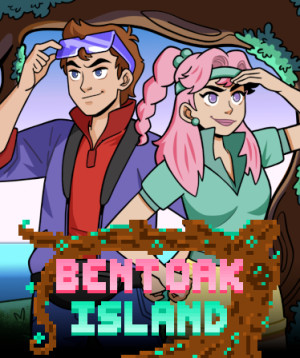











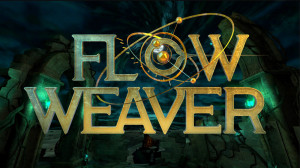

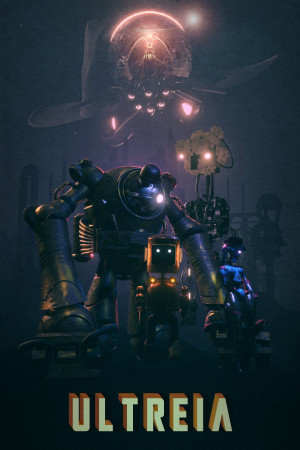

__medium.jpg)



